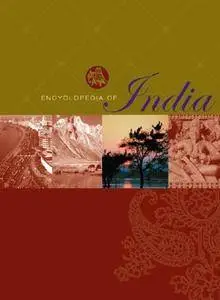Stanley Wolpert, "Encyclopedia of India", 4 Volume Set
Charles Scribners&Sons | 2006 | ISBN: 0684313499 | English | PDF | 1664 pages | 48.6 MB
Charles Scribners&Sons | 2006 | ISBN: 0684313499 | English | PDF | 1664 pages | 48.6 MB
As stated in the preface, there are "at least as many reasons for wanting to learn more about India as there are articles, nearly 600, and pages, some 1,400, in this new encyclopedia." A welcome contribution to Southeast Asian studies, Encyclopedia of India provides a comprehensive overview of the country's history, geography, ethnography, art, religion, language, economics, law, education, science, politics, medicine, and more. Editor-in-chief Wolpert is a distinguished professor emeritus of history at UCLA; under his leadership, a team of board members and 200 experts have written articles spanning 4,000 years of Indian civilization. The A-Z essays are signed, and each contains a bibliography (in some cases annotated) and cross-references. Nearly 150 entries are biographical and treat mostly political figures. More than 50 entries cover cities and provinces or states. Coverage of the arts is especially strong, with more than 120 entries on fabrics, film, music, painting, sculpture, monuments, and more. In some cases, the treatment is quite specific. For example, Dance forms has subentries on nine particular forms of dance, and Miniatures discusses seven distinct styles of painting. Also notable is the amount of space devoted to economic and religious topics.
The encyclopedia is lavishly illustrated with 300 black-and-white images and contains maps and 4 stunning color inserts, one per volume, highlighting Indian art, architecture, and sculpture; contemporary life; handicrafts; and the physical environment. Excellent finding aids include a comprehensive index and a thematic list of contents. Other features are an annotated general bibliography; a glossary; chronologies of India, Pakistan, Bangladesh, Nepal, and Sri Lanka; and a fascinating selection of texts taken from primary source materials like the sacred Hindu texts the Rig Veda and Bhagavad Gita, the edicts of King Ashoka (268-231 BC), the autobiography of Mahatma M. K. Gandhi, Nehru's speech on Gandhi's assassination, and excerpts from the philosophic teachings of Upanishadic philosophy.



